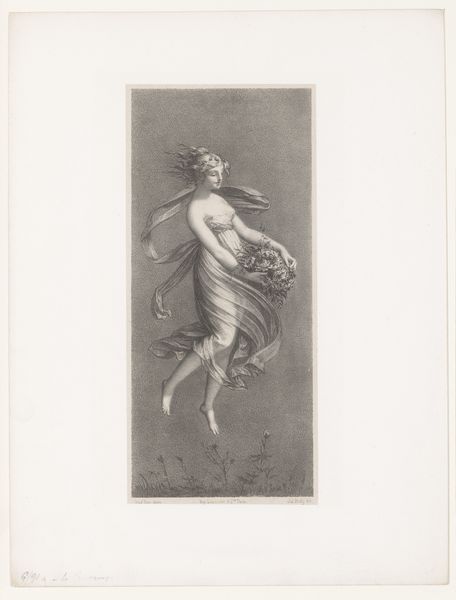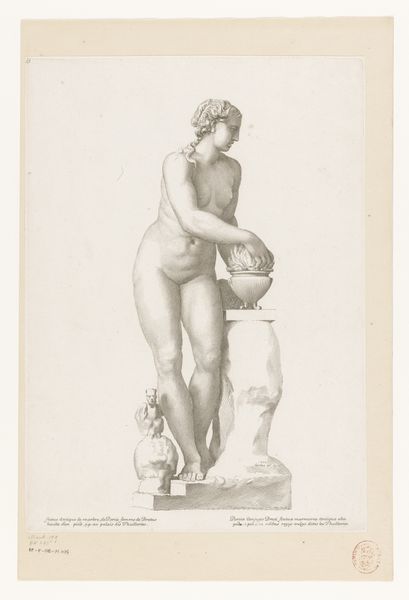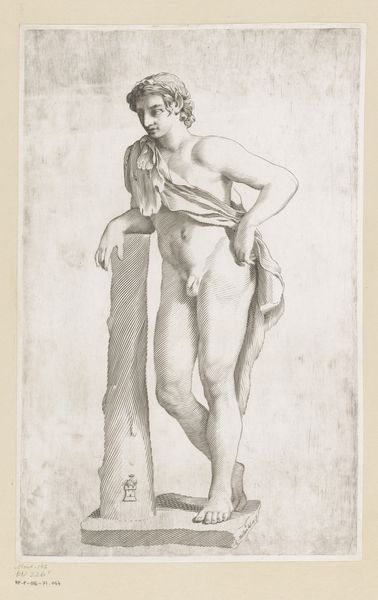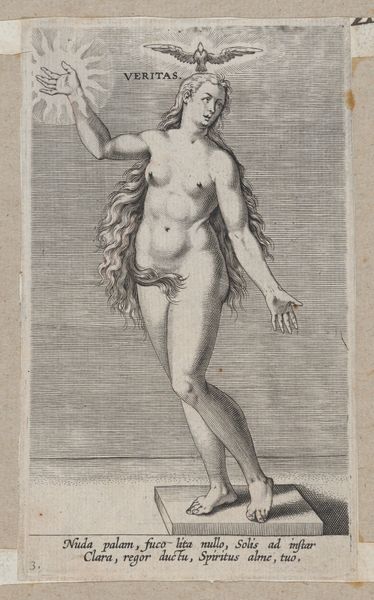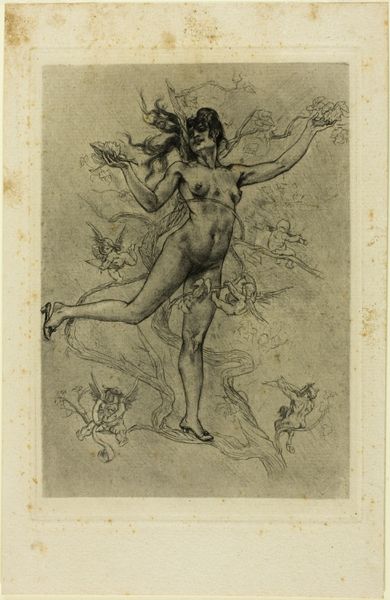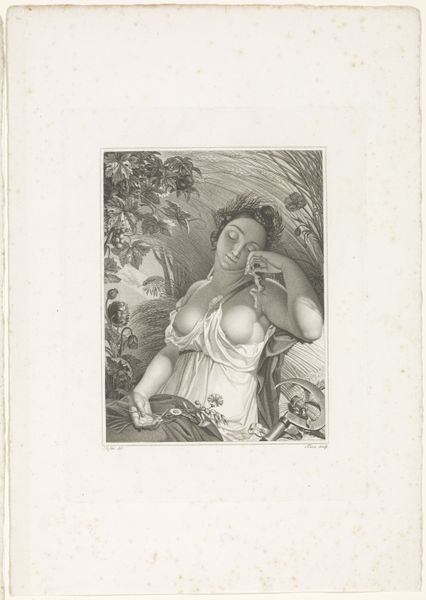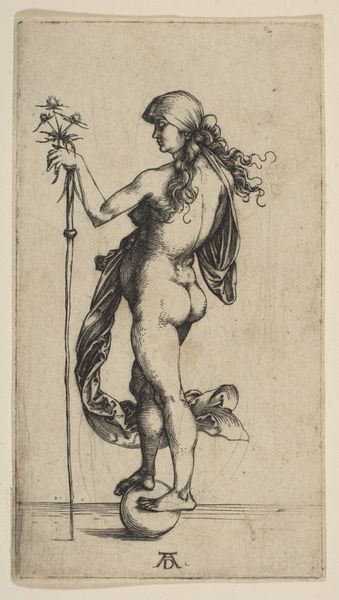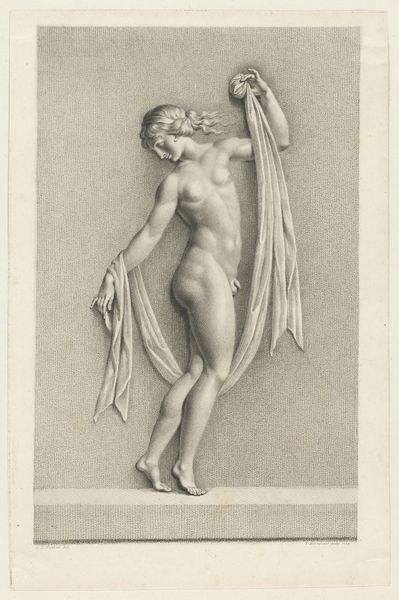
drawing, print, etching
#
drawing
# print
#
etching
#
pencil sketch
#
female-nude
#
nude
#
male-nude
Dimensions: sheet: 15 1/16 x 11 1/4 in. (38.2 x 28.6 cm) plate: 10 5/8 x 6 15/16 in. (27 x 17.6 cm)
Copyright: Public Domain
Curator: Welcome. Here we have James Tissot's "Third Frontispiece," created in 1876. It’s an etching and print now held at The Met. The piece features two nudes, one standing, the other reclining with a musical pipe. What's your initial response to the work? Editor: The mood seems oddly serene, considering. The tonal variations, achieved through the etching technique, give it a hazy dreamlike quality. Curator: Precisely. Consider how Tissot’s mark-making creates subtle transitions between light and shadow. The textures almost vibrate within the confines of the printed lines. One might observe his calculated placement of figures creates dynamism and contrast within this structured pictorial field. Editor: But who are these figures and what is that scroll the woman is holding? Considering this piece was created during a time of immense class disparity, does this piece simply celebrate wealth or is it something more nuanced? Curator: The scroll, we presume, advertises a set of Tissot’s etchings, perhaps gesturing to the commodification of art during this era, however, notice how the bodies are treated: each a pure form, articulated with incredible tonal variation, line weight, and form. Semiotically, each placement creates structure, rhythm, and overall artistic value independent of its sociohistorical place. Editor: It's fascinating to examine the gendered aspect within Tissot's art. Nudity often served different symbolic roles for male versus female figures. For example, how do we read these figures differently through the lens of female subjectivity, especially since one presents herself to the viewer whilst the other engages with the world? What do you think that is telling us about the artist's views of the role of women in the domestic or public sphere at the time? Curator: Those are critical lenses that are relevant and helpful within today’s art history dialogues. What is also relevant, I would argue, is how the linear qualities generate movement, further complicated by the static form itself. Tissot teases us! Editor: Ultimately, understanding these varied points of view lets us draw richer conclusions. I appreciate being challenged on those assumptions, thank you. Curator: Of course! It helps me solidify my appreciation for Tissot. These forms! Their shapes! Their curves! So inspiring to analyze… Thank you.
Comments
No comments
Be the first to comment and join the conversation on the ultimate creative platform.
